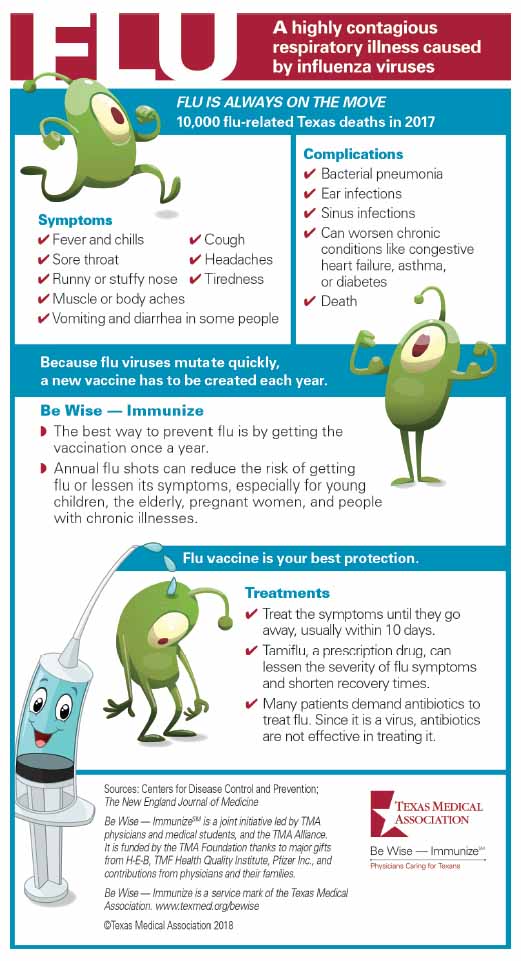One thing is certain about the influenza virus, or flu: It’s always on the move.
One virologist quoted in John M. Barry’s “The Great Influenza,” said flu is a “special instance” among infectious diseases, “transmitted so effectively that it exhausts the supply of susceptible hosts.”
During a typical flu season, October through March, physicians see a parade of people with stuffy noses, sore throats, and rasping coughs. Because flu viruses mutate quickly, a new vaccine has to be created each year. Even in good years, the vaccine is only about 60 percent effective. Because of that, and because flu symptoms resemble cold symptoms, many people dismiss getting a flu shot.
But flu is serious, and the shot can prevent or minimize the illness. The United States can see up to 710,000 flu-related hospitalizations and up to 56,000 deaths each year, according to U.S. Centers for Disease Control and Prevention. Last year in Texas, a particularly bad year, there were nearly 10,000* flu-related deaths, according to the Texas Department of State Health Services.
Every so often, flu takes an even nastier turn. It mutates into a strain that can sicken more people and create more serious symptoms than seasonal flu. These pandemic flu outbreaks have happened four times in the last 100 years — 1918, 1957, 1968, and not that long ago in 2009.
The holy grail of flu fighting is a universal vaccine that can be taken just once. So far, researchers have not hit that moving target, making the flu shot necessary every year. But even that imperfect vaccine is better than no vaccine at all.
*After this article went to press, the Texas Department of State Health Services revised Texas' 2017-18 flu-death figure to 11,000.
Download a printable copy of the infographic below.

Tex Med. 2018;114(10):46-47
October 2018 Texas Medicine Contents